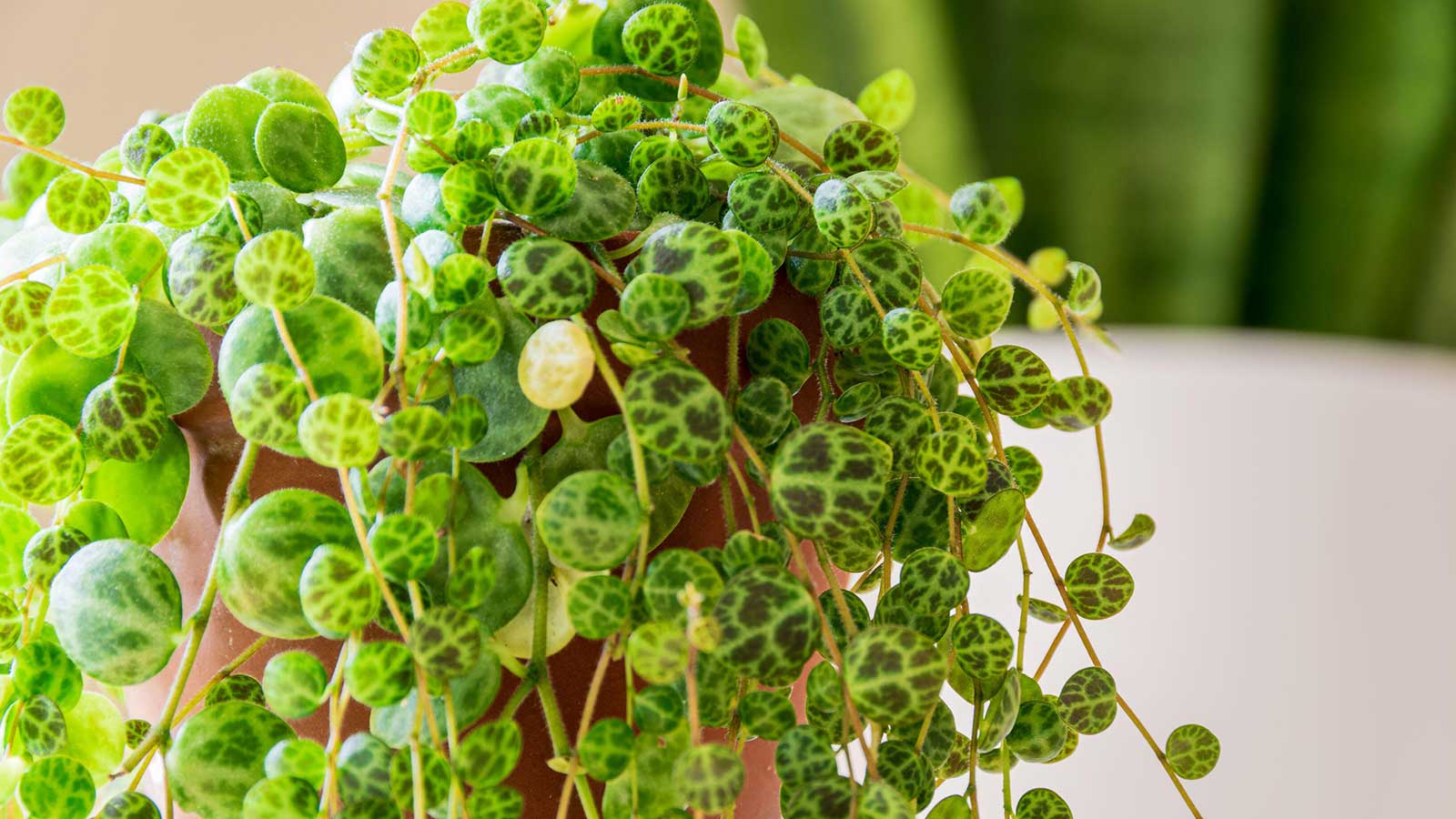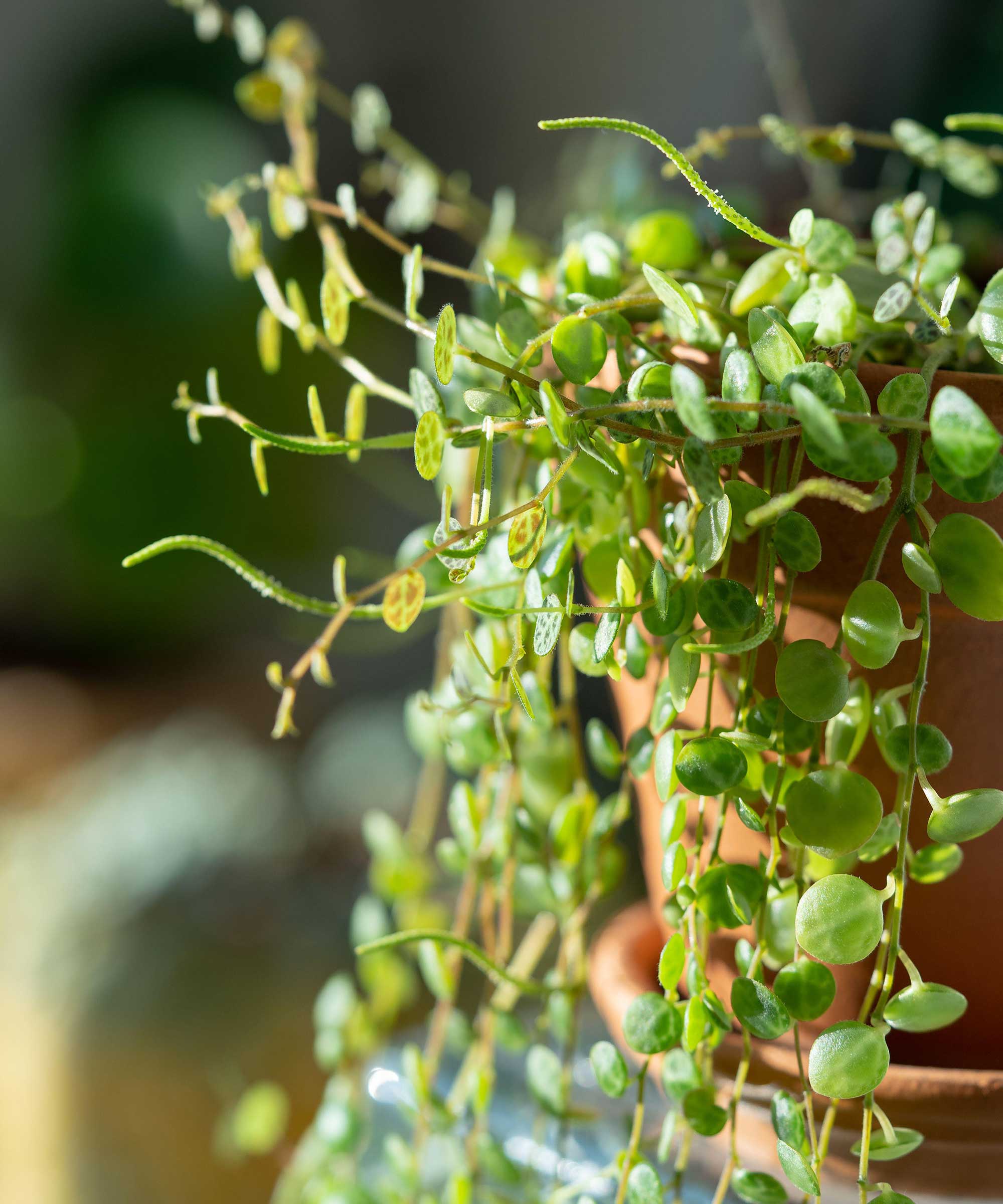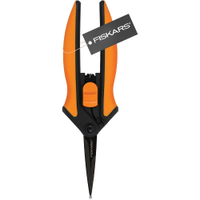How to propagate string of turtles – for more of these popular, trailing houseplants
There are two simple methods to choose from


String of turtles, otherwise known as Peperomia prostrata, is a type of trailing houseplant that's perfect for a high shelf or a hanging planter. They are similar to string of pearls (Senecio rowleyanus) and string of hearts (Ceropegia woodii), but are distinguishable by the markings on their flat leaves. And they are just as simple to propagate.
All you need to do is take stem cuttings, which can then be planted in either a good-quality potting mix or into a jar of water. The whole process is incredibly quick – and roots should form in a matter of weeks – as long as you stay clear of the common houseplant propagation mistakes.

These pretty trailing plants are perfect for positioning up high
How to propagate string of turtles in soil
Autumn Hilliard-Knapp of Perfect Plants Nursery shares her simple steps for propagating a string of turtles houseplant:
- Using a sharp pair of scissors, cut a 3-4in section of the plant, just below a node. Nodes are where leaves and roots emerge from the main stem.
- Next, remove a few leaves from the lower section of the cutting, close to where you made the initial cut. This will expose some bare nodes.
- Take the stripped cutting and place it in a pot with moistened soil, ensuring that at least one node is buried beneath the surface.
- Find a spot with bright, indirect sunlight for the potted cutting and water it enough to keep the soil consistently moist, but make sure to avoid over-watering. Misting the plant and soil when they're dry should be sufficient.
- In a few weeks, you should notice root development. To check if it's rooted, give the plant a gentle tug – resistance indicates successful rooting.
Fiskars Micro-Tip Pruning Snips | $13.10 from Amazon
Try these ergonomically-designed snips for taking precise cuttings from your string of turtles, succulents, and more.

Autumn is a horticulture specialist and marketing professional at Perfect Plants Nursery. With four years of experience in the horticulture industry, she has developed a passion for helping people create beautiful indoor and outdoor spaces to enjoy. Her expertise in horticulture encompasses a broad range of activities, including plant care and selection, landscape design, and maintenance.

Avoid overwatering your string of turtles
How to propagate string of turtles in water
Propagating in water rather than soil is suitable for many indoor plants, string of turtles included. It's fast, there's no messy compost to clear up (at least, until the rooted cuttings need potting up), plus it's fun to watch roots develop.
- Take cuttings in the same way as above, removing the bottom leaves.
- Then, place the bottom of the stem in a jar of clean water. Avoid allowing any leaves to touch the water. If necessary, you can cover the opening of the jar with plastic wrap, then poke a hole through just for the stem – this will keep the leaves supported.
- Put the jar somewhere warm with bright but indirect light.
- Once a good root system has established, carefully plant the cutting into a pot of well-draining soil mix.
When trying this method, it's important to stay clear of the common water propagation mistakes for the best chance of success, and to change the water frequently.

These plants are distinguishable by their patterned leaves, which look a bit like turtle shells
When to propagate string of turtles
It's best to propagate these houseplants during their growing season, which is in the warmer months of spring or summer. This will encourage quicker rooting of the cuttings, and the parent plant will recover quicker, too.
Once you've tried propagating your string of turtles, why not have a go at propagating other plants around your home, too? From monstera to rubber plants, prayer plants to spider plants, there are multiple propagation methods that will turn your home into a jungle-like haven, for free. Plus, any extra plants make thoughtful gifts for loved ones.
Sign up to the Homes & Gardens newsletter
Design expertise in your inbox – from inspiring decorating ideas and beautiful celebrity homes to practical gardening advice and shopping round-ups.

Holly started writing about gardening five years ago, and she is a regular contributor to Homes & Gardens. She has also written many gardening features for Woman & Home and Real Homes, too. She has previous experience as a professional gardener, where she helped to plant and maintain private gardens. Holly has also looked after allotment plots over the years and loves to grow her own flowers and veggies from seed. In her spare time, she enjoys visiting local gardens, botanical drawing, and tending to her ever-growing collection of houseplants.
-
 ‘It leads to more headaches than it's worth’ – 4 reasons you should never store things in your oven, including fire risks and serious illness
‘It leads to more headaches than it's worth’ – 4 reasons you should never store things in your oven, including fire risks and serious illnessYour oven is for cooking, and cooking only, experts urge
By Chiana Dickson
-
 Urban gardening ideas – 7 creative ways to grow in small spaces, balconies, containers, indoors, and more
Urban gardening ideas – 7 creative ways to grow in small spaces, balconies, containers, indoors, and moreMake the most of your space with these innovative ways to garden
By Tenielle Jordison
